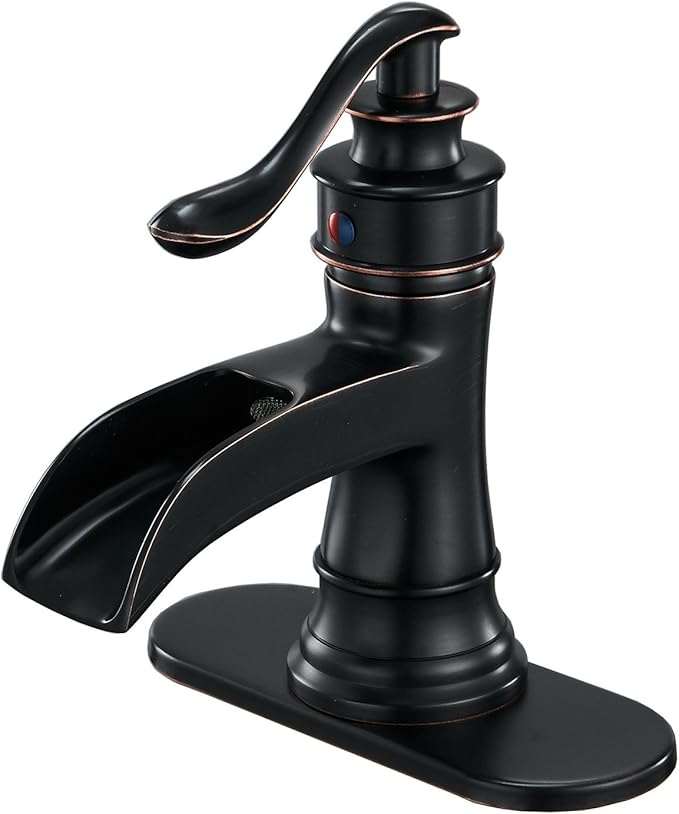After deciding on the bathroom layout and design you want, the next step is determining the materials you will need for your remodel. If you’ve seen the bathroom remodel checklist before starting your project, then you already know that there are plenty of fixtures, hardware, accessories, and other products that you will need to renovate your bathroom.
With all those details you need to take care of, it can be overwhelming and time-consuming to remodel a bathroom. It’s better to identify the features and finishes you want for your new bathroom so that you won’t miss anything, ensuring that everything will go well together, and save time and effort. This will also give you an idea if your dream bathroom is realistic and within budget.
Now, let’s check out the different fixtures, hardware, accessories, and other materials that you may need for a bathroom remodel so that you will be prepared and have a smooth-sailing project. Note that you may not need all the materials listed here since it will depend on whether you will just do minor upgrades or a major renovation.
Bathtub vs. Shower
One of the hardest decisions to make when remodeling your bathroom is whether to get a tub or a shower, especially for those who have limited space. While showers are more common, this doesn’t mean they are better than tubs. To find out which one would be more suitable for your dream bathroom, here are the pros and cons of a bathtub and a shower.
Bathtub Pros and Cons
Pros
Cons
Shower Pros and Cons
Pros
Cons
Expert tip:
Now that you’ve read about the advantages and disadvantages of each one, you can learn more about the different types of bathtubs and shower systems after deciding which one (or two) to get.
Different Types of Bathtubs
Standard Bathtub
This is a regular bathtub that doesn’t come with extra features but gets the job done. It has different installation styles, and one of the most common ones is the alcove bathtub. This tub is placed between three walls and has one finished side for the open space. It is the recommended tub for bathrooms with small spaces since it has the smallest footprint.
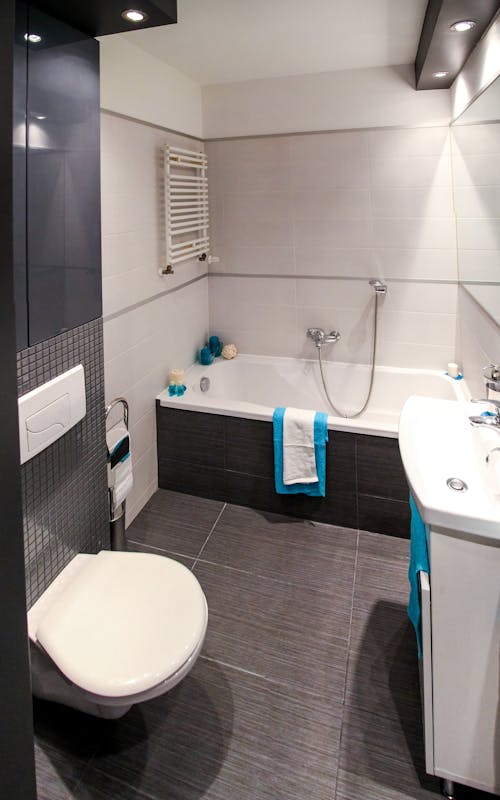
Freestanding Bathtub
Also called standalone tubs, this is another installation option for a regular bathtub. A freestanding bathtub can be placed anywhere since all sides are finished. It can either have feet, like clawfoot or slipper bathtubs, or a solid base for a modern look. Since they aren’t installed in corners, they will use up more space and will have exposed plumbing.
The alcove and freestanding bathtubs are some of the most affordable types, costing around $200 to $700 price range.
Walk-In Bathtub
Regular bathtubs are not safe for older or physically-challenged people, but if they still prefer to use a tub, then they can get a walk-in bathtub. It is a convenient type where one can easily and safely get in and out of the bathtub due to its special sealed door. This type costs more than the regular bathtub, around $2,000 to $6,000.
Hot Tub
You can get hot tubs outdoors, you can install one in your bathroom. This tub comes with jets, which shoots out water or air, to provide a massage-like experience when one lies inside the bathtub. Combined with the warm water, this can help relieve sore muscles and joints. Due to its extra features, it is more expensive and can cost between $700 to $2,000.
Different Types of Shower System
Electric Shower
If you want an instant hot shower, an electric shower has a built-in heating unit that can heat up water faster since it doesn’t need to combine hot and cold to get the optimal temperature. It takes the cold water from your home’s supply, so you won’t need a hot water supply but this system may increase your electricity bill.
Thermostatic Shower
This type works similarly to a manual mixer but you can control or program the specific temperature into the thermostat. It provides consistent water temperature, preventing you from freezing or getting scalded. Thermostatic showers can come with a digital control panel, which is why they are sometimes referred to as digital showers. Due to its technology, it’s going to be more expensive than the other types.
Toilet
There are many different types of bathrooms, and a feature that you can’t miss, whether in a master bathroom or a half bathroom, is the toilet. For some, a toilet is just a toilet, but after years of innovation, there are now different types that come in various sizes, shapes, and functions. Before you choose any toilet you see, check out the most common toilet styles to get the best one for your home.
Different Types of Toilets
Wall-Mounted Toilet
This type is recommended for small bathrooms. Not only does it take up less space, but it looks great with the tank hidden inside the wall. It will just be expensive and difficult to install, probably requiring a full bathroom remodel since you will need to install the tank in the wall. Another disadvantage is you will need to hire plumbers to fix this type of toilet.
Smart Toilet
If you have a big budget, then you might want to go for a smart toilet. It comes with features that make it more functional and comfortable such as automatic flushers, heated seats, and a self-cleaning function. With these technological enhancements, this luxury toilet is going to be more expensive and will require a nearby electrical power source.
Important consideration:
Don’t forget to purchase a toilet paper holder toilet roll dispenser. The most common style is the horizontal frame that is mounted or recessed into a wall. For a different look, you can get a freestanding vertical pole, which can also hold several rolls so you don’t have to keep refilling.
Sink
You would think that it would be easier to choose a sink, but this is another bathroom features that come in different styles. Similar to the toilet, a sink is a fixture that you’ll find in different types of bathrooms - whether it’s a master bath or a powder room. It’s not limited to the bathroom as kitchens have sinks as well.
While some homeowners don’t really give a lot of thought to their sinks, you may want to check out your options. So here are the common types of bathroom sinks that you can choose from.
Different Types of Sinks
Drop-in Sink
Also called self-rimming sinks, this is a popular type of sink that is usually installed into a vanity or countertop. It is easy to install, with lips or rim to keep it in place on the countertop. This sink comes in different shapes and materials, making it a stylish option that provides more storage.
Important consideration:
Since wall-mounted sinks don’t have a base or countertop for support, it will rely on the wall to carry its weight. Make sure to hire a professional to install this type of sink to prevent damaging your bathroom wall.
Our Pick: Recommended Faucets Under $80
Vanity
A convenient and visually-appealing feature to have in your bathroom is a vanity. While it takes up space, a vanity provides storage space as well as a countertop area for different items and products.
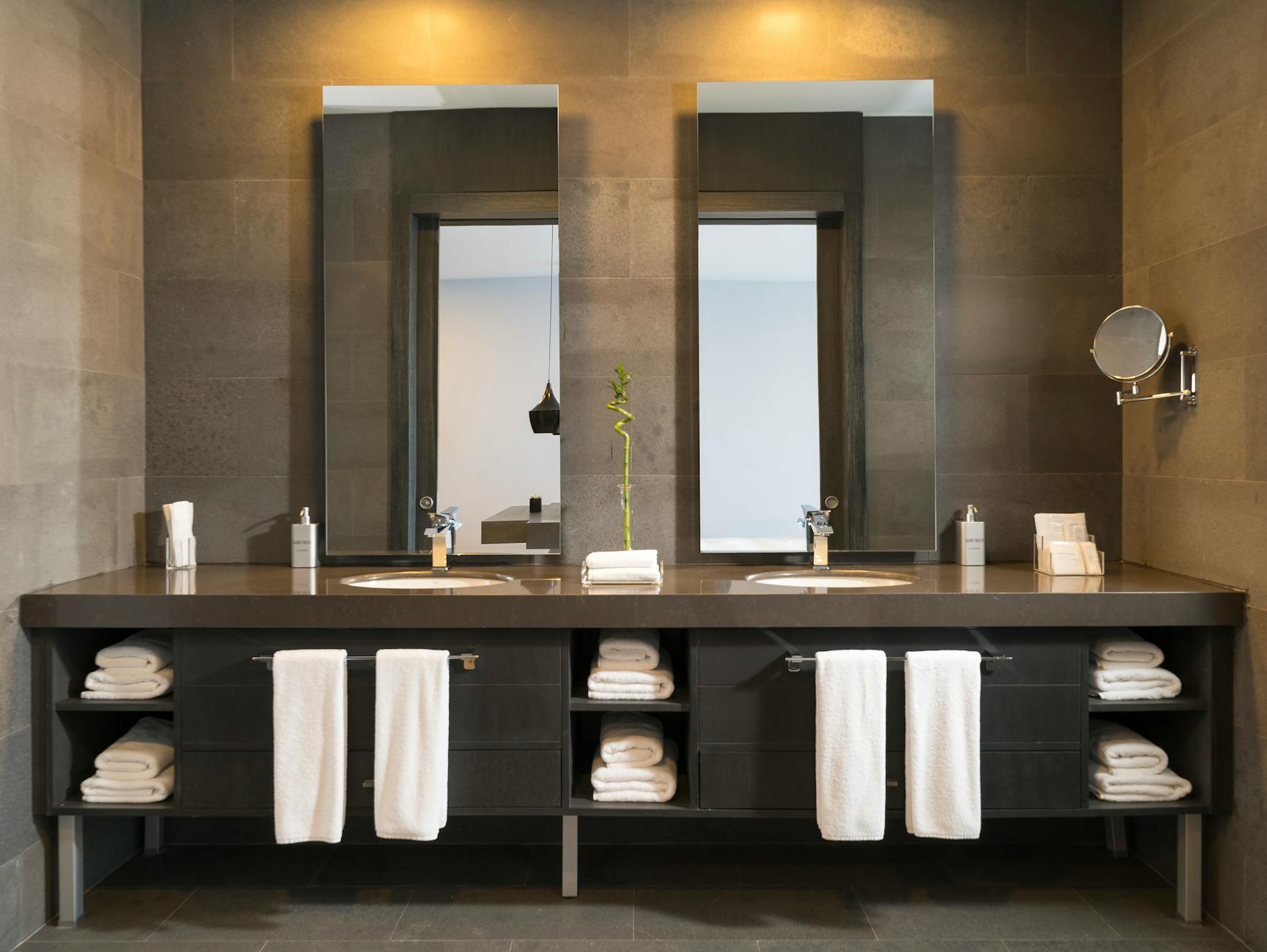
You can get a pre-made or custom vanity for your bathroom. Whichever one you choose, make sure to select on as soon as possible so you’ll get your vanity before the rest of the project is completed.
Expert tip:
Storage
Aside from vanities, you can add extra shelves and cabinets for more storage space. These can be freestanding or wall-mounted and are usually made out of wood, teak, glass, ceramic, metal, or plastic.

Important considerations:
- When choosing the cabinets, don’t forget the knobs and handles for the cabinet doors. Even if it’s a small detail, it’s important to consider the design and functionality of the knob or handle.
- If you want to install storage areas above, use open-shelving to avoid the difficulty of opening cabinet doors.
As mentioned, you can place shelves on top. Some of the common locations you can add shelves are above the vanity, toilet, or door. With floating cabinets and shelves, you can utilize the vertical space anywhere in the bathroom.
Expert tip:
Countertop
There are many materials for bathroom countertops that are available on the market. To narrow the list down, here are the most popular ones used for bathrooms:
Tile Countertop
One of the most commonly used materials for bathroom countertops is tile. It can be made out of porcelain, ceramic, or glass, and come in a variety of colors and styles.
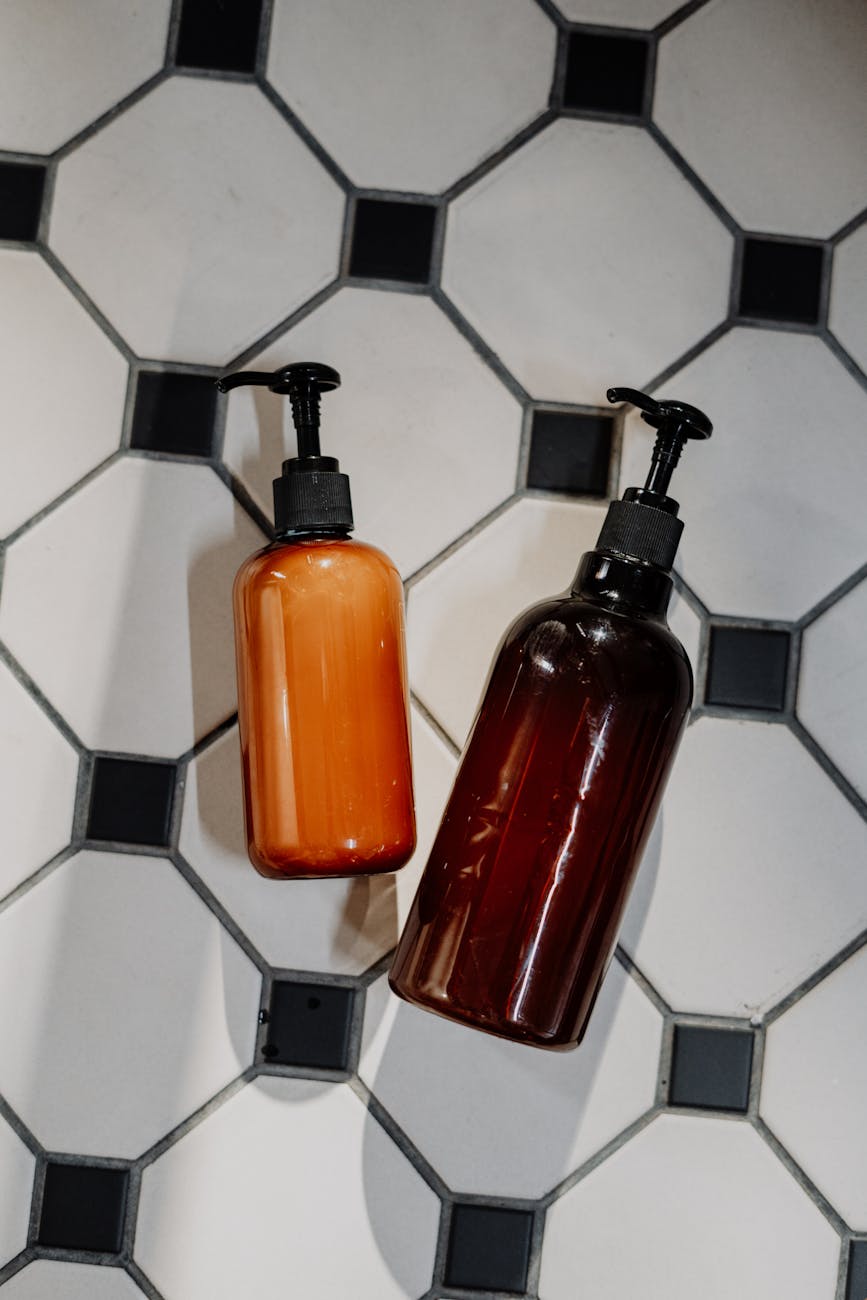
The cost range is very large for tile countertops. The material can range from less than $1 up to $200 for custom or artisan tiles. The installation of the standard tile, won’t be expensive, costing around $25 to $40 per square foot.
Pros
Cons
Laminate Countertop
A popular and affordable material for bathroom countertops is laminate. It is made out of plastic which is bonded to create a solid surface. This material used to be an unpopular option due to its appearance, but nowadays, it has frequent residential bathrooms as it can be made to look like wood, marble, granite, or stainless steel.

This countertop is recommended for those who are on a tight budget. This material costs between $10 to $65 per square foot. Laminate countertops are also quick to install, making it suitable for those who need to quickly finish their bathroom remodel.
Pros
Cons
Natural Stone
For those who are doing a high-scale bathroom remodel, one of the most popular materials to make the bathroom look luxurious is natural stone. There are many types of stone that can be used, such as marble, slate, granite, soapstone, and limestone. These can be installed as a thick solid slab or as tiles. This material is more expensive compared to others, ranging from $50 to $200 per square foot.

Source: Pinterest - Amanzi
Pros
Cons
Bathroom Surfaces
The bulk of your material needs will be for the flooring and walls. Similar to countertops, there are different materials you can use for your bathroom surfaces.
Tile Flooring and Wall
Tiles are commonly used in bathrooms, whether it be for the countertop, walls, or flooring. Some of the reasons for its popularity is that it is durable, easy to clean, and affordable. It doesn’t get damaged by moisture or humidity and is stain-resistant when sealed properly.
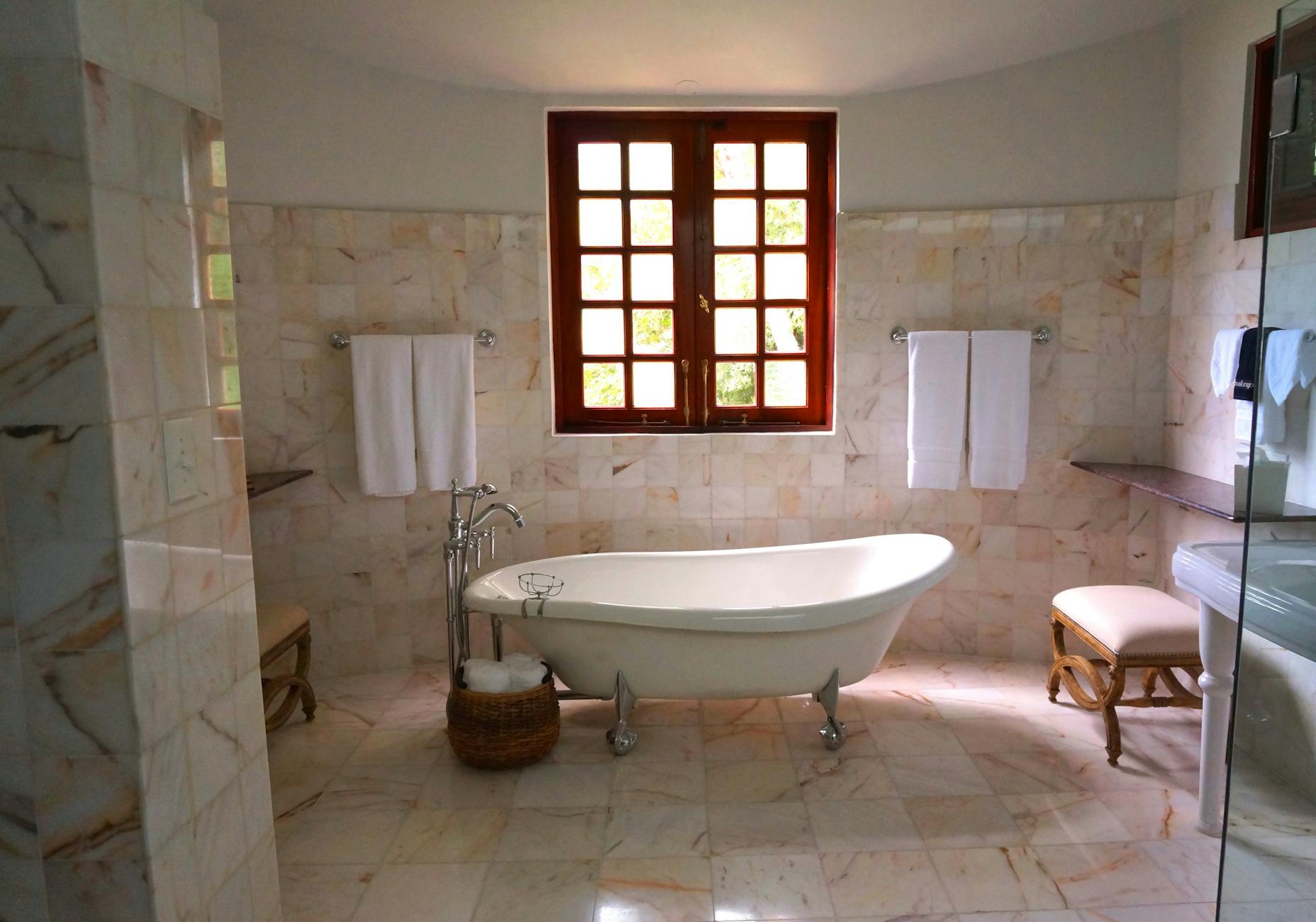
Expert tip:
Wooden Flooring
While it may be weird to have wood as a bathroom floor, this material can now be sealed to prevent moisture damage. Some homeowners prefer a hardwood floor to make it look seamless with the rest of their home.
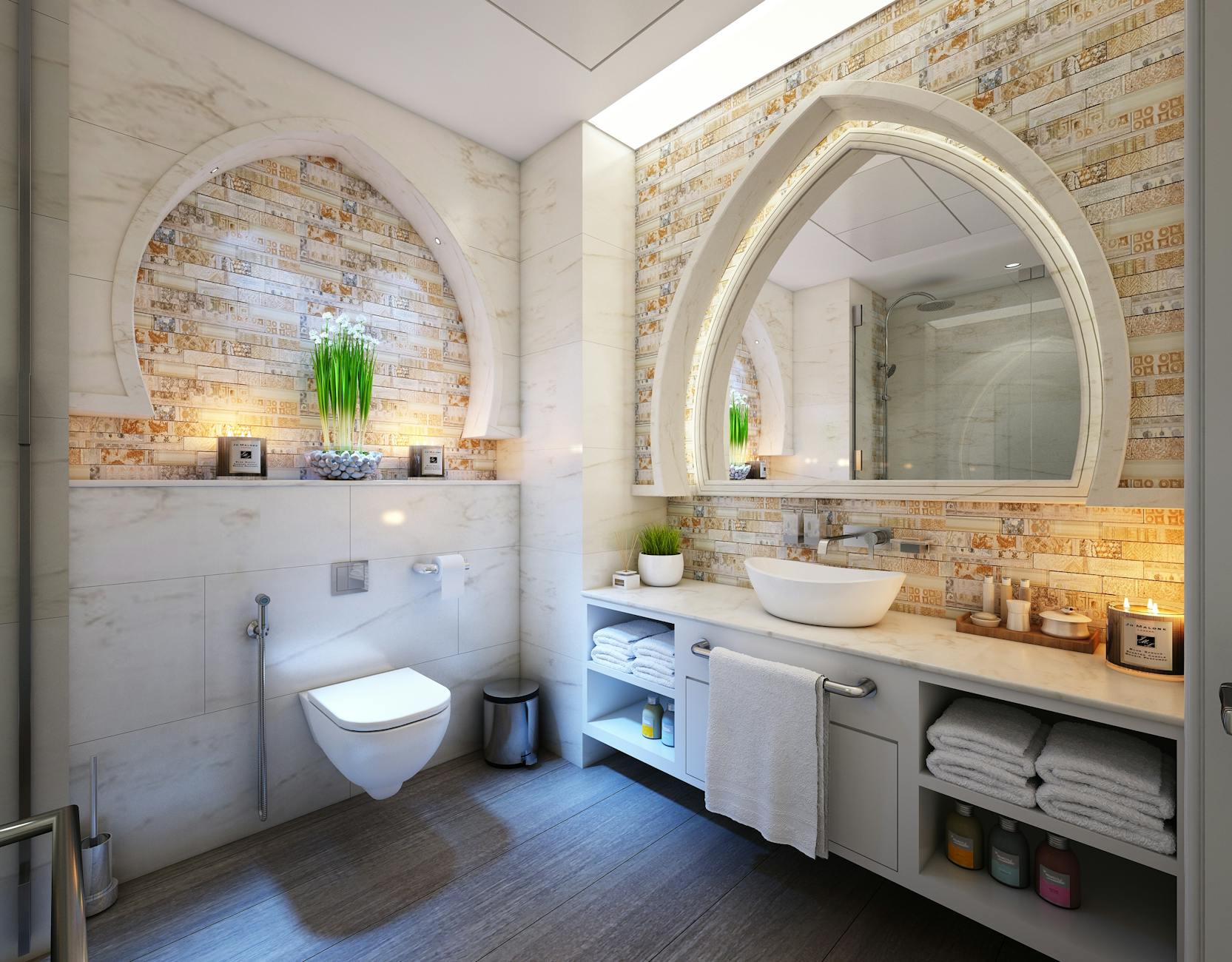
Expert tip:
Carpet Flooring
Another weird material for a bathroom floor is carpet. Imagine the dirt and stains from using a bathroom that may stick to the carpet, as well as the risk of mildew growing - who would want that? Surprisingly, some people prefer the carpet look and feel.

Source: Walmart
But if you’re thinking it’s the same carpet used in other rooms, then I’m glad to inform you that it’s not. No one wants to step on a wet carpet every time they go to the bathroom, that’s why the material used for the bathroom are resistant to stain, water, and mildew. It also comes with a backing to prevent water from getting into the padding.
Expert tip:
Other Wall Options
Paint
Bathroom walls don’t always need to be tiled. You can use interior paint suited for bathrooms. These are made with additives to prevent mold and mildew. Due to these enhancements, it will be more expensive than regular paint.
Expert tip:
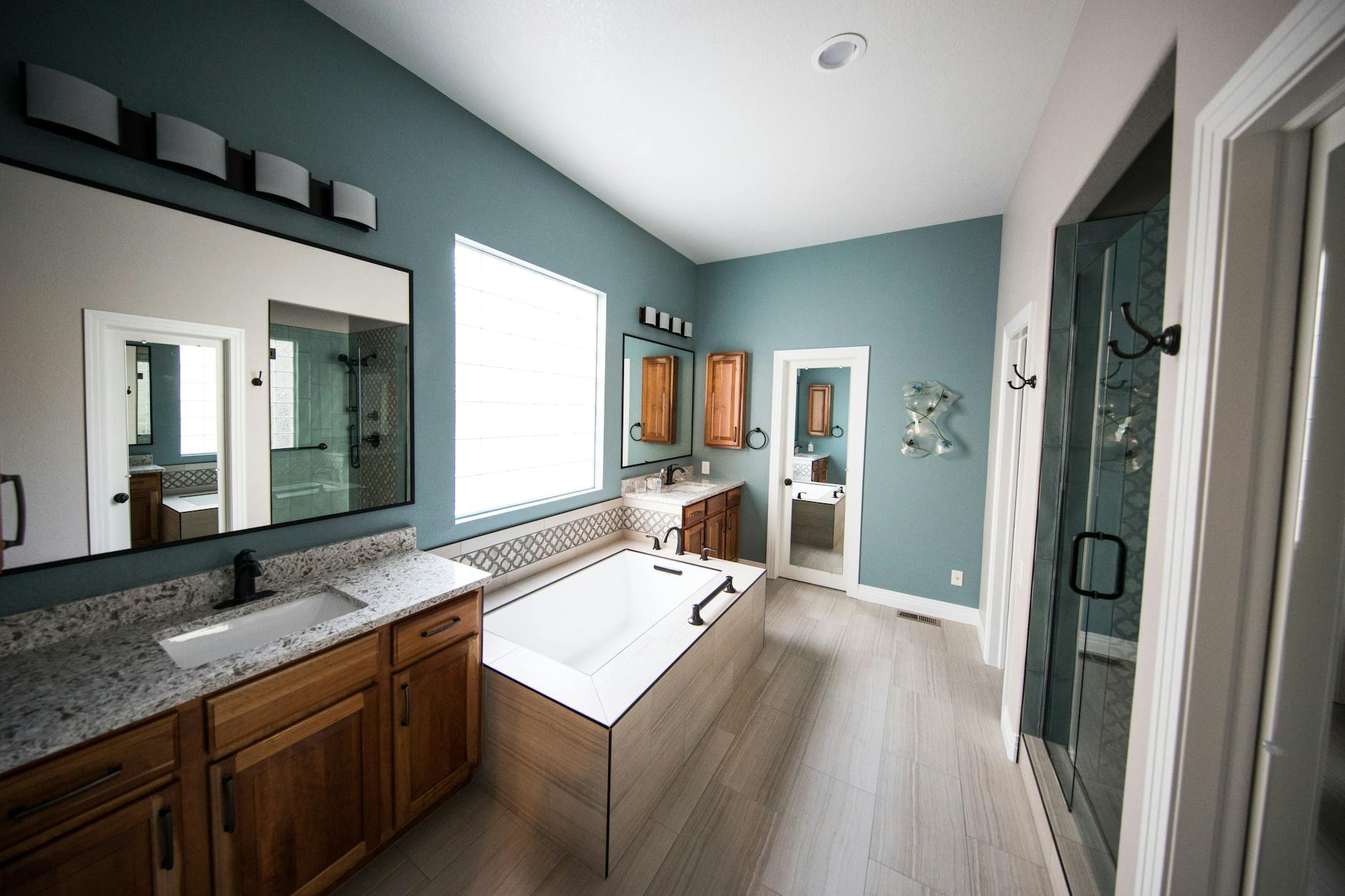
Wallpaper
Another material you can use for bathroom walls is vinyl wallpaper. As long as your bathroom wall surface can accommodate peelable wallpaper, then this is a good and easy-to-install option.

Source: Pinterest
Expert tip:
Lighting
Lighting is often overlooked when remodeling a bathroom yet it is an important aspect that affects the aesthetic and functionality of the room.
Expert tip:
Aside from single-source lighting, there are different lighting styles you can use to illuminate your bathroom. Here are some of our favorite bathroom lighting options:
Ceiling Lighting
Most bathrooms will at least have one type of lighting, and that’s a ceiling light. This is usually placed in the center to illuminate the entire room. It is mainly used for functionality than design, providing enough light to comfortably and safely use the bathroom. But nowadays, it can be used as a decoration, such as a small chandelier to increase the visual appeal of the room.
Wall Sconce
Ceiling lights are not enough to properly light the bathroom, especially the vanity area. That’s why sconces have become a popular lighting fixture installed beside the vanity. With this, it will be easier to shave or ensure one is applying makeup evenly. Aside from its functionality, it can also be used for ambient lighting.
Recessed Lighting
For a more stylish look, recessed lighting can be used for functional and ambient lighting. It is commonly installed in the ceiling, but it can also be used over shower stalls, above the tub, or along the vanity area.
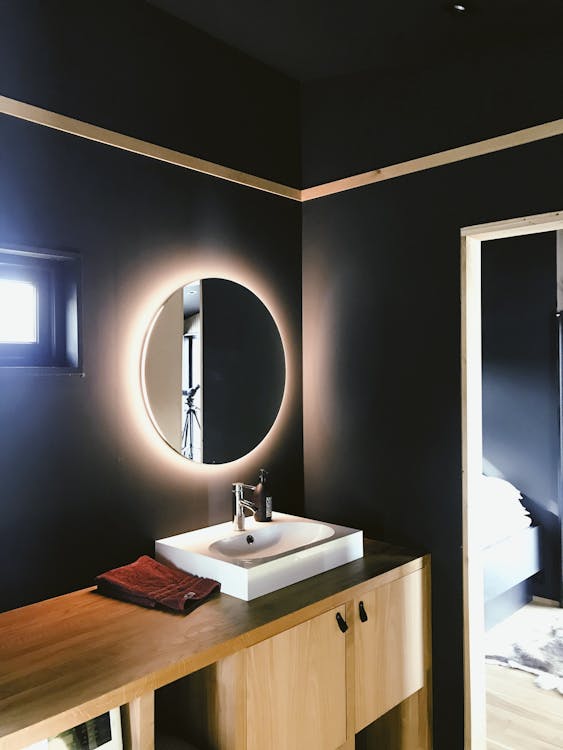
Important consideration:
When sourcing materials for your bathroom, don’t forget about the light switch covers. It is a small detail that is also often overlooked but still has an impact on your overall bathroom's look.
Heating, Ventilation, and Cooling
Do you want to make your bathroom experience more comfortable? If it gets too cold, too warm, or too stuffy, there are some heating, ventilation, and cooling systems you can install to prevent these from happening.
Expert tip:
Furniture and Other Accessories
While some homeowners view the bathroom as a space where they just come and go, this doesn’t mean you can’t decorate it to make it more visually appealing or add technological features.
Decor
Similar to other rooms in your home, you can also decorate the bathroom the same way. You can place some chairs, like the vanity area. It would also be nice to have candles, paintings, and other artworks. Nothing like relaxing in a tub surround by scented candles and beautiful pieces to look at.

Plants
A growing trend in the bathroom remodeling space a biophilic design. Integrating plants can make the space more relaxing as well as visually appealing. It can be as simple as adding potted plants to installing a green wall - you can have your own private oasis.
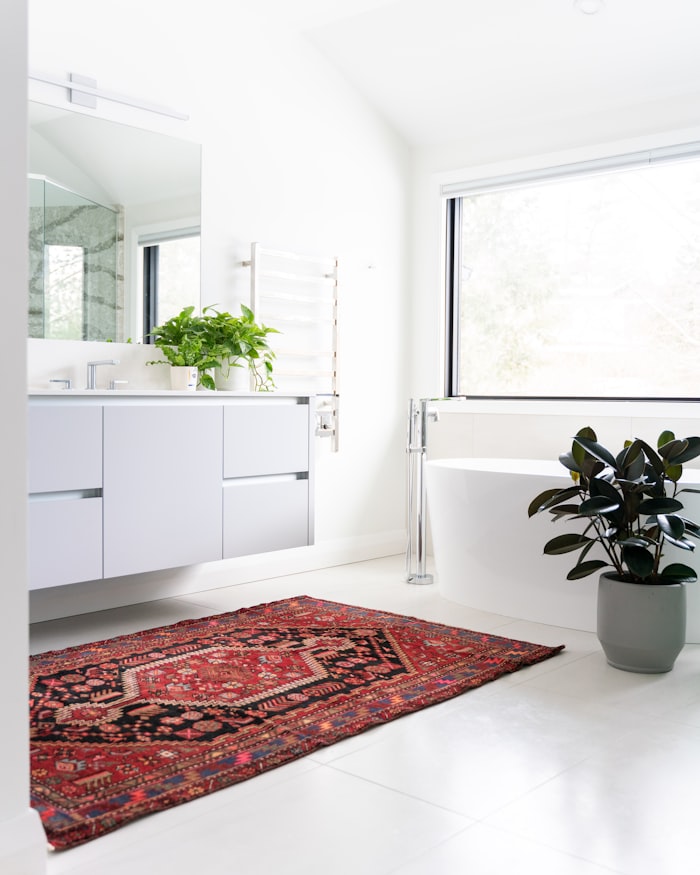
To find out more about what’s popular in bathroom remodeling, check out the top bathroom remodel trends of 2020.
Smart Bathrooms
Thanks to technology, we can now convert a bathroom into a smart one for a more functional and comfortable experience. Nowadays, bathrooms have become more convenient with enhancements like smart showers, mirrors, and toilets. With automatic faucets and dispensers, going contactless even decreases the spread of bacteria.
Our Pick: Recommended Smart Mirrors For Less Than $400
159 Ratings
Comes in two sizes
Hangs horizontally or vertically
Anti-fog
Dimmable LED light
Bluetooth speaker
97 Ratings
5 different sizes
Dimmable LED light
Demist and defogging
Weather forecast, temperature, and humidity display
Calendar, time, and date display
Aside from voice-activated features and automation, there’s more to modernizing bathrooms. By adding appliances such as warming drawers, sound systems, televisions, refrigerators, beverage dispensers, and more, a bathroom isn’t just a bathroom anymore - it is an entertainment, spa, and zen room all in one.
Most importantly…
After planning, preparing, or even sourcing the materials, fixtures, and accessories for your bathroom remodel, it would all go to waste if you don’t have the right contractor to do the job.
If you want to be able to find trusted and reliable professionals in your local area, try Networx. With this platform, you can easily and quickly compare quotes of licensed and insured contractors.
CAN'T FIND THE RIGHT CONTRACTOR?


















